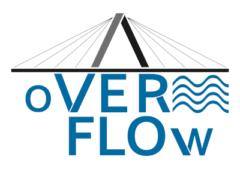
While the mean daily rainfall in Southern Eastern Europe (SEE) has increased only a little since 1950, the intensity of the strongest rainfall events rose by one third4. In May 2014, daily rainfall amounts were higher than at any time since records began. The frequency of such potentially devastating extremes in the region has doubled over the past sixty years. According to IPCC projections many countries will be exposed to higher peak river discharges in the near future. The three partner countries in the oVERFLOW project are particularly vulnerable to cross-border river flooding in their position near the end of major European river systems.
The catastrophic inundation of New Orleans in 2005 demonstrated vividly that the resilience of a flood defence system is controlled by the weakest link in the network. Whilst the risk based approach VNK2 is the state of the art, the determination of the probability of failure of a levee (which is fundamental to quantifying risk) is critically dependent on a number of highly uncertain parameters. In the VNK2 approach the most significant uncertainties relate to (i) length effects – whereby the probability of failure increases with length of the element as the possibility of encountering a soft or weak zone that would cause collapse increases and (ii) uncertainty about the location of potential seepage causing piping or boils. A number of recent collapses of major bridges shortly after inspection5 highlight the constraint that assessment of critical infrastructure takes place periodically (typically over a one to five year period) and return a unique, stationary condition score. During flood induced failures (collapse of a levee or scour of a bridge) the condition can change in a matter of minutes.

